- Data Basin |
- Datasets |
- ODFW Conservation Opportunity Areas, Oregon (2016)
ODFW Conservation Opportunity Areas, Oregon (2016)
May 12, 2010
(Last modified Dec 16, 2020)
Uploaded by
Conservation Biology Institute
Dataset was reviewed in another manner
- Description:
- ODFW Conservation Opportunity Areas (COAs) are a component of the Oregon Conservation Strategy, and highlight areas across the Oregon landscape where broad fish and wildlife conservation goals would best be met, and aim to increase the likelihood of long-term success, maximize effectiveness over larger landscapes, improve funding efficiency, and promote cooperative efforts across ownership boundaries. COAs were developed to guide voluntary conservation actions in Oregon. Land use or other activities within these areas will not be subject to any new regulations as a result of being designated an ODFW COA. The ODFW COA map, dataset, and underlying profile information should only be used in ways consistent with these intentions.
Landowners and land managers throughout Oregon can contribute to conserving fish and wildlife by maintaining, restoring, and improving habitats. These conservation actions benefit Strategy Species and Strategy Habitats, and are important regardless of location. However, focusing investments in prioritized areas, or Conservation Opportunity Areas (COAs), can increase the likelihood of long-term success, maximize effectiveness over larger landscapes, improve funding efficiency, and promote cooperative efforts across ownership boundaries. COAs are places where broad fish and wildlife conservation goals would best be met, and have been designated for all ecoregions within the Conservation Strategy, except the Nearshore ecoregion. COAs were delineated through a spatial modeling analysis, incorporating datasets focusing on Oregon Conservation Strategy components (Strategy Species, Strategy Habitats, and Key Conservation Issues), and expert biologist review. More information on COA methodology can be found here: http://oregonconservationstrategy.org/conservation-opportunity-areas/methodology/.
COAs include supporting information in an associated COA profile, including details about the area’s Conservation Strategy priorities, recommended actions consistent with local priorities, and ongoing conservation efforts. Links to COA profiles are provided as an attribute in the COA dataset, and can also be found here - http://oregonconservationstrategy.org/conservation-opportunity-areas/.
- Data Provided By:
- Oregon Department of Fish and Wildlife, Oregon Conservation Strategy, Salem, OR.
- Content date:
- 2015-10-01T00:00:00 - 2025-10-01T00:00:00
- Citation:
-
Title: ODFW Conservation Opportunity Areas
Credits: Oregon Department of Fish and Wildlife
Publication Date: 2016
Publisher: Oregon Department of Fish and WildlifeTime Period of Content: CurrentStatus: Final
- Contact Organization:
-
Agency: Oregon Department of Fish and WildlifeName: Arthur RodriguezJob Position: Oregon Conservation Strategy GIS AnalystTelephone: 503-947-0126E-Mail Address: arthur.h.rodriguez@state.or.us
- Contact Person(s):
- Use Constraints:
- COAs were developed to guide voluntary conservation actions in Oregon. Land use or other activities within these areas will not be subject to any new regulations as a result of being designated an ODFW COA. The ODFW COA map, dataset, and underlying profile information should only be used in ways consistent with these intentions. The Oregon Conservation Strategy is currently under review by the US Fish and Wildlife Service. Until approval, the 2015 COAs should be considered a draft dataset, and the 2006 COAS should continue to be used as the official ODFW COAs.
- Layer:
- Layer Type:
- Currently Visible Layer:
- All Layer Options:
- Layers in this dataset are based on combinations of the following options. You may choose from these options to select a specific layer on the map page.
- Description:
- Spatial Resolution:
- Credits:
- Citation:
- Purpose:
- Methods:
- References:
- Other Information:
- Time Period:
- Layer Accuracy:
- Attribute Accuracy:
FGDC Standard Metadata XML
Click here to see the full FGDC XML file that was created in Data Basin for this layer.
Original Metadata XML
Click here to see the full XML file that was originally uploaded with this layer.
This dataset is visible to everyone
- Dataset Type:
-
Layer Package
Downloaded by
22 Members
Bookmarked by
5 Members
,
7 Groups
Included in
8 Public Maps
,
8 Private Maps
About the Uploader
Conservation Biology Institute
We provide advanced conservation science, technology, and planning to empower our partners in solving the world’s critical ecological challenges


 Arthur Rodriguez
Arthur Rodriguez
